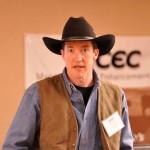Conference told that by employing permaculture, cover crops, strategic rotation and reduced tillage, small landowners can generate surpluses and contribute to food security
Sarah Jaibes isn’t a soil scientist, or an international development expert, but she knows a lot about how to make small farms work and what it will take to feed nine billion people by 2050. The Zimbabwean farmer became involved in conservation agriculture in 2009, after rising inflation made it difficult to live on her





